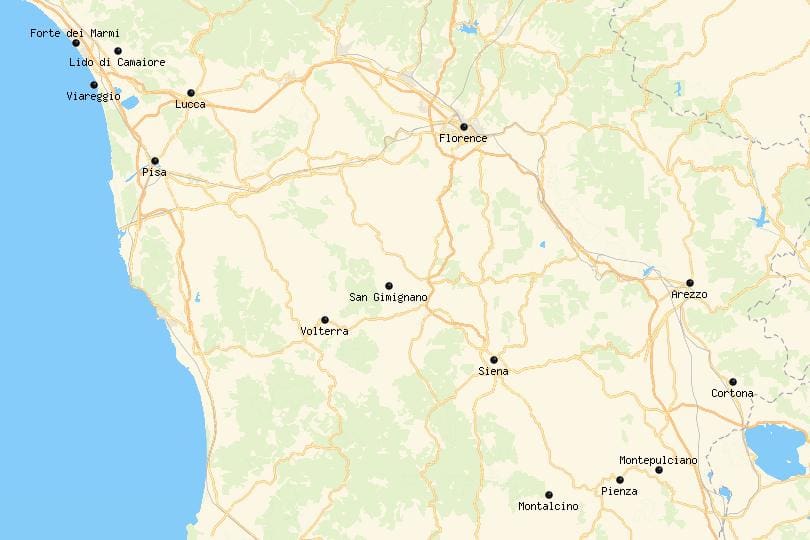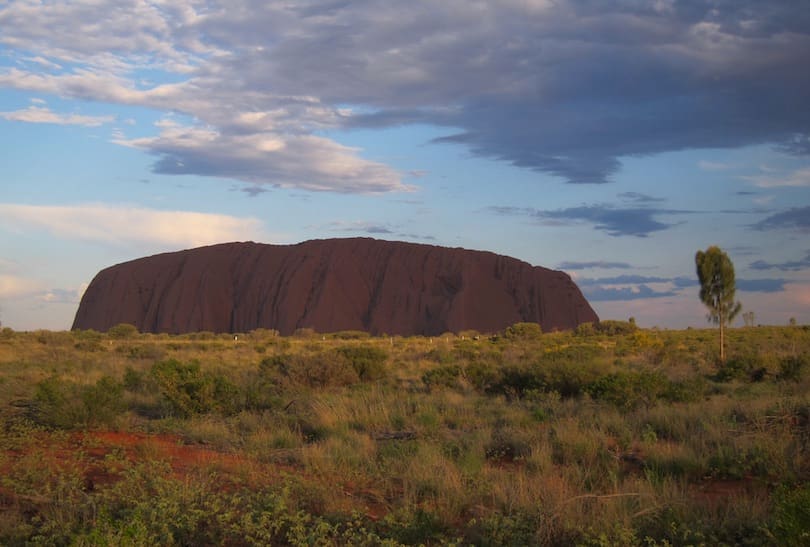Shillong, also known as the “Scotland of the East,” is a picturesque hill station located in the northeastern state of Meghalaya, India. Known for its misty mountains, scenic valleys, and pleasant weather, Shillong has long been a favorite destination for travelers seeking a mix of adventure, culture, and natural beauty. The town offers an array of experiences throughout the year, but choosing the right time to visit can make all the difference to your trip. From trekking through misty landscapes to soaking in the festive vibe, the best time to visit Shillong depends on what you’re looking to experience.
In this detailed guide, we will walk you through the different seasons in Shillong and help you decide which time is perfect for your visit, depending on the activities you prefer and the kind of weather you enjoy.
1. Summer in Shillong (March to June): Mild and Pleasant
Weather Overview: Shillong experiences a mild and pleasant climate during the summer months. Temperatures typically range from 15°C to 25°C (59°F to 77°F). This is considered one of the best times to visit Shillong as the weather remains cool and comfortable compared to the scorching heat found in most other parts of India.
Best Activities in Summer:
- Sightseeing and Photography: The summer months offer crystal-clear skies, making it an ideal time for sightseeing and capturing the town’s scenic beauty. Visit landmarks like Shillong Peak, where you can enjoy panoramic views of the surrounding hills, or explore Ward’s Lake, a serene spot perfect for a quiet afternoon.
- Trekking and Hiking: Summer is perfect for outdoor activities like trekking. Explore trails such as the David Scott Trail, which offers stunning views of the Khasi Hills. Whether you’re an experienced trekker or just starting, Shillong’s lush terrain offers options for all levels.
- Waterfalls and Lakes: Take the opportunity to visit some of Shillong’s famous waterfalls like Elephant Falls and Sweet Falls. The lush green surroundings and the water cascading from the hills make these locations even more spectacular during the summer months.
- Cultural Events: Summer is the season when Shillong hosts a variety of cultural events and festivals. The Shillong Summer Festival showcases the region’s music, dance, and art, providing an excellent way to immerse yourself in the local culture.
Why Visit in Summer:
- Comfortable and mild weather perfect for outdoor activities
- Ideal for photography with clear skies and beautiful landscapes
- Excellent for trekking, hiking, and exploring local attractions
- The town is alive with cultural events and festivals
2. Monsoon in Shillong (July to September): A Nature Lover’s Paradise
Weather Overview: Shillong experiences heavy rainfall during the monsoon season, from June to September. With an annual average rainfall of over 2,000 mm, the region becomes lush and green during the monsoon. Temperatures range from 15°C to 20°C (59°F to 68°F), offering a cool and misty atmosphere. While this is not the most popular time for tourists, monsoon is undoubtedly the season for nature lovers and those seeking tranquility.
Best Activities in Monsoon:
- Nature Photography: The monsoon transforms Shillong into a paradise for photographers. The hills become even more picturesque, shrouded in mist, with waterfalls in full flow. Capturing the beauty of places like Nohkalikai Falls, Sweet Falls, and the cascading waterfalls in Mawlynnong can be a magical experience.
- Trekking and Scenic Views: While monsoon trekking can be challenging due to slippery trails, the lush greenery and rejuvenated landscapes make it a rewarding experience for avid trekkers. The Mawphlang Sacred Forest, a mystical and ancient forest, looks even more enchanting during the rainy season.
- Exploring Waterfalls and Lakes: The heavy rainfall ensures that all the waterfalls in Shillong, like Elephant Falls and Krang Suri Falls, are at their fullest, making for a spectacular sight. The mist-covered surroundings also create an ethereal atmosphere that’s perfect for quiet reflection and solitude.
Why Visit in Monsoon:
- Experience Shillong in its lushest and most vibrant form
- Ideal for nature photography and capturing stunning landscapes
- Fewer tourists, offering a peaceful, tranquil getaway
- Great for visiting waterfalls and lakes in their full glory
Caution for Monsoon Travel: The roads can be slippery and prone to landslides, making it essential to check weather forecasts before traveling. Also, some trekking routes may be inaccessible or dangerous during heavy rainfall.
3. Autumn in Shillong (October to November): The Ideal Time for Sightseeing and Festivals
Weather Overview: Autumn in Shillong is characterized by clear skies, moderate temperatures, and pleasant weather. The temperatures during this season generally range from 10°C to 20°C (50°F to 68°F). After the heavy rains, the town is vibrant with lush greenery and misty mornings, making it a wonderful time to explore the outdoors.
Best Activities in Autumn:
- Exploring Shillong’s Attractions: Autumn is one of the best times for sightseeing. With clear skies and pleasant temperatures, visiting places like Umiam Lake, Shillong Peak, and Elephant Falls is more enjoyable. The cool weather makes exploring the town’s attractions more comfortable.
- Trekking and Hiking: The weather is perfect for trekking, with cooler temperatures and fewer rains. Popular trails like Mawphlang Sacred Forest and David Scott Trail become more accessible and less muddy, making hiking a pleasant experience.
- Cultural and Religious Festivals: Autumn is the season of celebrations in Shillong. The town comes alive with festivals like Durga Puja, Diwali, and Meghalaya Autumn Festival. These festivals offer a unique opportunity to witness the region’s rich cultural heritage, with vibrant dances, local performances, and traditional rituals.
- Shopping and Souvenir Hunting: Autumn is also an excellent time for shopping in local markets like Police Bazaar and Laitumkhrah, where you can find handicrafts, jewelry, and traditional Khasi attire.
Why Visit in Autumn:
- Clear skies and pleasant weather for sightseeing
- Excellent conditions for trekking and outdoor exploration
- A chance to experience the vibrant festivals and cultural celebrations
- Beautiful landscapes for photography and relaxation
4. Winter in Shillong (December to February): Chilly and Cozy
Weather Overview: Winter in Shillong is marked by chilly weather, with temperatures ranging from 2°C to 15°C (36°F to 59°F). While snow is rare, the town experiences a crisp, cool atmosphere, especially in the early mornings and evenings. The winter months are ideal for those who enjoy cold weather and misty mornings.
Best Activities in Winter:
- Winter Trekking and Exploration: The cool winter weather makes trekking more comfortable. Popular trails such as Mawphlang and David Scott become less crowded, making it the perfect time for peaceful walks through nature.
- Christmas and New Year Celebrations: Shillong is known for its lively Christmas celebrations. The town is beautifully decorated with lights and offers a festive atmosphere during the holiday season. You can also enjoy the local food and traditions associated with the festival.
- Cultural Immersion: The Shillong Winter Festival and other cultural events are held during this season, giving you a glimpse into the local culture through music, dance, and performances. The chilly weather makes it perfect for enjoying cozy evenings by the fire in local cafes and resorts.
- Photography: Shillong’s winter landscape, with its fog-covered mornings and crisp afternoons, offers fantastic opportunities for photography. Capture the misty valleys, colonial-style architecture, and lush greenery in the cool winter air.
Why Visit in Winter:
- Ideal for winter lovers who enjoy chilly, crisp weather
- Christmas and New Year celebrations offer a festive vibe
- Great for trekking and exploration in cooler conditions
- Opportunities for cultural immersion and attending winter festivals
Accommodation Options in Shillong
Shillong offers a variety of accommodation options, ranging from budget stays to luxurious hotels, making it an accessible destination for every type of traveler. Whether you are visiting for a short getaway, a family vacation, or a romantic trip, Shillong has something to suit your preferences. Here are some of the best accommodation choices:
1. Luxury Hotels
For those looking for a lavish stay with top-notch amenities, Shillong has several luxury hotels that promise comfort and style. These establishments provide excellent service, beautiful views, and all the modern facilities to make your stay memorable.
- The Polo Towers Shillong
Located in the heart of the city, Polo Towers offers luxury combined with great service and convenience. With spacious rooms, fine dining, and scenic views of the hills, it’s a popular choice for both business and leisure travelers. - Ri Kynjai – Serenity By The Lake
Situated on the serene Umiam Lake, Ri Kynjai is an upscale resort offering traditional Khasi-style architecture, luxurious rooms, and the tranquility of nature. It’s a perfect spot for those looking to escape the bustle of city life while enjoying high-end comfort. - La Viva Residency
If you prefer a blend of modern comforts and excellent hospitality, La Viva Residency offers stylish rooms, a beautiful garden, and proximity to tourist attractions like Ward’s Lake and Shillong Peak.
2. Mid-Range Hotels
For those seeking comfortable yet affordable stays, mid-range hotels are a great option. These hotels often offer good service, decent amenities, and spacious rooms.
- Hotel Centre Point
Located in the heart of Shillong, Hotel Centre Point offers contemporary rooms, free Wi-Fi, and easy access to popular shopping areas such as Police Bazaar. The hotel’s in-house restaurant serves a variety of Indian and local dishes. - Cherrapunjee Holiday Resort
Situated just outside Shillong, this mid-range resort provides a peaceful environment surrounded by nature. Known for its cozy rooms, excellent service, and views of the hills, it’s an ideal spot for relaxation. - The Heritage Club – Tripura Castle
A perfect combination of heritage and modernity, Tripura Castle offers cozy rooms with an antique touch and stunning views of the hills. The resort’s peaceful surroundings make it a favorite for those seeking a calm retreat.
3. Budget Hotels and Guesthouses
If you’re traveling on a budget, Shillong has plenty of budget-friendly options to choose from, where you can still enjoy comfort and convenience without breaking the bank.
- The Shillong Hostel
A great choice for backpackers or solo travelers, The Shillong Hostel offers dormitory-style accommodation with a lively atmosphere. It’s budget-friendly and close to the central areas of Shillong, making it a perfect base for exploring the city. - Mawphlang Homestay
For a more personalized experience, you can opt for homestays. Mawphlang Homestay offers a unique opportunity to stay with a local family, experience Khasi hospitality, and enjoy traditional home-cooked meals. - Laitumkhrah Guesthouse
This guesthouse offers comfortable and affordable accommodation, perfect for families or small groups. With clean rooms and helpful staff, it’s a great budget-friendly option in the vibrant Laitumkhrah area.
4. Eco-Friendly Stays and Resorts
If you prefer staying close to nature and enjoy sustainable living, Shillong offers a selection of eco-friendly resorts and stays that blend comfort with eco-consciousness.
- Willy’s Hotel and Eco Resort
Located in Mawphlang, this eco-resort is perfect for nature lovers. It offers comfortable cottages, natural surroundings, and an opportunity to experience sustainable living in the heart of nature. - The Shillong Guest House
Known for its proximity to nature and commitment to sustainability, this guesthouse offers clean, eco-friendly accommodations and is perfect for travelers who want to minimize their carbon footprint.
Local Cuisine in Shillong
Shillong is a culinary delight, especially for those eager to experience the flavors of the northeastern part of India. The cuisine is influenced by the traditional dishes of the Khasi, Jaintia, and Garo tribes, as well as some Bengali and Assamese flavors. Here’s a deeper look at the local cuisine of Shillong that you must try during your visit:
1. Khasi Cuisine
The Khasi people of Shillong are known for their distinct and flavorful cuisine. The food is simple yet rich in taste, utilizing fresh local ingredients such as rice, meat, and a variety of herbs and spices.
- Jadoh
Jadoh is a quintessential Khasi dish made from rice and pork, often cooked with spices and served with a side of vegetables. It is the signature dish of Shillong, loved by locals and tourists alike. The combination of pork and rice makes it a filling and hearty meal. - Dohkhlieh
A traditional Khasi dish, Dohkhlieh is a pork salad made with boiled pork and mixed with onions, green chilies, ginger, and mustard oil. It’s light yet flavorful, often served with rice or flatbreads. - Tungrymbai
Tungrymbai is a fermented soybean dish, often cooked with pork or fish. It’s a popular comfort food in Shillong and is known for its strong, tangy flavor.
2. Garo Cuisine
The Garo tribe, which is one of the indigenous tribes of Meghalaya, also influences the food culture of Shillong. Garo cuisine features both vegetarian and non-vegetarian dishes, often rich in spices and herbs.
- Nakham
A delicious dish made from fermented soybeans, fish, and pork, Nakham is rich in flavor and often paired with rice. It’s a must-try for anyone looking to dive deeper into Garo culinary traditions. - Sakin
This is a fish curry made from local river fish, tomatoes, and mustard oil, giving it a spicy and tangy flavor. It’s served with steamed rice and is a staple in Garo households.
3. Traditional Snacks and Street Food
Shillong has a vibrant street food culture, with several snacks and local treats that visitors can enjoy while exploring the town.
- Pork Momos
These steamed dumplings, stuffed with pork and served with spicy chutneys, are a popular snack in Shillong. They can be found at local food stalls, especially in areas like Police Bazaar. - Smoked Pork
A special delicacy of Shillong, smoked pork is typically served with rice and chutney. The smoky flavor makes it incredibly delicious, and it’s a must-try for pork lovers. - Pineapple Slices
Shillong is known for its abundance of fresh pineapples, which are often served as street food in the form of chilled slices sprinkled with salt and chili powder.
4. Beverages and Sweets
To accompany your meals or as a refreshing treat, Shillong offers a variety of local beverages and sweets.
- Jolly Sweets
A famous sweet in Shillong, Jolly is a sweet made from coconut, sugar, and water, often flavored with local herbs and spices. It’s a traditional dessert enjoyed by locals. - Tea
Shillong has a thriving tea culture, with Assam tea and local blends available in most local eateries. Khasi herbal teas, made with native herbs, are also commonly served.
5. Vegetarian Delights
Though Shillong is known for its meat dishes, there are plenty of vegetarian options for those who prefer plant-based foods. Dishes like vegetable curries, dal, and green leafy vegetables are staples in the region.
Whether you are looking for an indulgent meal or an authentic taste of Shillong’s local flavors, the town’s cuisine offers something for every palate. Combined with the wide range of accommodation options, Shillong promises a delightful and memorable stay.
Conclusion: Choosing the Best Time to Visit Shillong
Ultimately, the best time to visit Shillong depends on your personal preferences and the type of experience you’re looking for:
- For outdoor adventures and clear skies, summer (March to June) is the best time.
- For a nature-filled getaway and quieter travel, monsoon (July to September) offers a lush, serene atmosphere, though you’ll need to be cautious about the rains.
- For sightseeing, trekking, and enjoying festivals, autumn (October to November) is ideal, with pleasant weather and vibrant cultural celebrations.
- For chilly weather, winter festivals, and a cozy experience, winter (December to February) will be perfect.
Frequently Asked Questions (FAQs) about the Best Time to Visit Shillong
1. What is the best time to visit Shillong for a pleasant weather experience?
The best time to visit Shillong for pleasant weather is during summer (March to June) and autumn (October to November). These seasons offer cool temperatures, clear skies, and the perfect weather for sightseeing, trekking, and enjoying the natural beauty of the town.
2. Can I visit Shillong during the monsoon season?
Yes, you can visit Shillong during the monsoon (July to September), but be prepared for heavy rainfall. The monsoon season transforms Shillong into a lush green paradise, with full-flowing waterfalls and misty landscapes. However, the roads can be slippery, and some trekking routes may be challenging during this time.
3. Is Shillong a good destination for trekking?
Absolutely! Shillong offers several trekking routes, including the David Scott Trail, Mawphlang Sacred Forest, and trails leading to waterfalls like Elephant Falls. The best time for trekking is during the summer and autumn months when the weather is cooler and more comfortable.
4. What is the weather like in Shillong during winter?
During winter (December to February), Shillong experiences chilly weather with temperatures ranging from 2°C to 15°C. It’s a great time for those who enjoy cold, misty mornings and cozy vibes. Although snow is rare, the town’s atmosphere becomes crisp and invigorating.
5. What festivals can I enjoy while visiting Shillong?
Shillong celebrates several festivals throughout the year. If you visit during the summer, you can enjoy the Shillong Summer Festival, showcasing music, dance, and art. The autumn months feature vibrant celebrations of Durga Puja and Diwali, while winter brings festive Christmas and New Year celebrations, as well as the Shillong Winter Festival.
6. Are there any cultural experiences I can explore in Shillong?
Yes, Shillong offers several opportunities to explore its rich culture. During the autumn and winter months, you can attend local festivals, visit museums like the Don Bosco Museum, or enjoy traditional Khasi music, dance, and crafts at various cultural events.
7. What is the best time for photography in Shillong?
The monsoon season and autumn months are considered the best times for photography. The monsoon brings lush green landscapes and misty views of the hills, while autumn provides clear skies and vibrant landscapes perfect for capturing Shillong’s beauty.
8. Can I visit Shillong with kids and family?
Yes, Shillong is a family-friendly destination. The pleasant weather during summer and autumn makes it ideal for families to explore the scenic beauty, visit waterfalls, enjoy boating at Umiam Lake, and explore parks and natural reserves.
9. How should I prepare for traveling to Shillong during the monsoon season?
If visiting during the monsoon, make sure to carry waterproof clothing, sturdy shoes for slippery trails, and an umbrella. Also, check weather forecasts before traveling, as roads can sometimes be affected by landslides or flooding.
10. How do I reach Shillong?
Shillong is well-connected by road, rail, and air. The nearest airport is Lokpriya Gopinath Bordoloi International Airport (Guwahati), about 130 km away from Shillong. From there, you can hire a taxi or take a bus. You can also reach Shillong by train via Guwahati or by direct road transport from nearby towns.
11. Are there any special events in Shillong during Christmas or New Year?
Yes, Shillong is known for its vibrant Christmas celebrations, with the town decorated in festive lights and several events organized throughout the month of December. New Year celebrations also bring music, dance, and other cultural activities, making it a fantastic time for visitors who enjoy the holiday spirit.
12. Is Shillong safe to visit throughout the year?
Shillong is considered safe for tourists year-round. However, during the monsoon season, it’s important to be cautious about the weather and road conditions. Always check weather updates before embarking on outdoor activities or long drives.
13. What are the must-visit places in Shillong?
Some of the must-visit places in Shillong include:
- Shillong Peak (for panoramic views)
- Ward’s Lake (a serene lake with boating)
- Elephant Falls (a beautiful waterfall)
- Mawphlang Sacred Forest (a mystical and sacred forest)
- Umiam Lake (ideal for water sports and photography)
- Don Bosco Museum (for cultural insights)
- Police Bazaar (for shopping and local food)
14. Can I experience snowfall in Shillong?
Snowfall in Shillong is rare, especially in the town itself. However, it is not uncommon for the surrounding higher altitude areas to receive light snowfall during the winter months (December to February), especially on the outskirts and in nearby hill stations.
15. What is the local cuisine like in Shillong?
Shillong offers a delicious array of local Khasi, Jaintia, and Garo cuisines. Try traditional dishes like Jadoh (rice with meat), Dohkhlieh (pork salad), and Tungrymbai (fermented soybean dish). Shillong is also known for its roadside food stalls offering pork momos, smoked pork, and traditional Khasi sweets.















